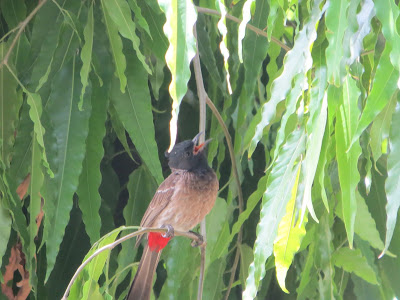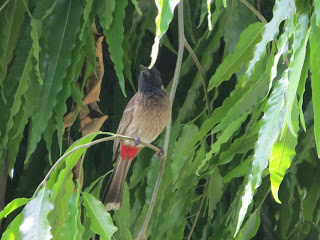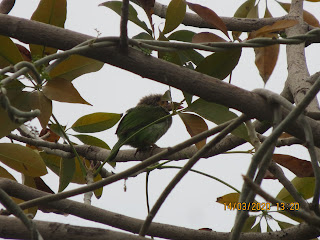Bulbul , there is something about this name. A common bird easily sighted at least in Delhi and most parts of India. Bulbul belong to the family Pycnontidae (order of Passeriformes) of Africa and Asia.
There are 140 to 150 species of birds in this family.
The word bulbul derives from Hindi or Persian or Arabic, meaning nightingale, but in English, bulbul refers to passerine birds of a different family.
During my travels and when observed I can identify between only 3 among these species.
1) Red-vented Bulbul
2) White cheeked Bulbul
3) Red Whiskered Bulbul
However, if you go on lower classification and run a google search you will find more varieties of the same.
Red-vented Bulbul are a perky smoke brown bird with partially crested black head, scale like markings on breast and back, a crimson or red patch below root of tail and a white rump. Usually I have spotted them in pairs of small groups in gardens.
They feed on banyan and peepul figs and winged termite swarms. They also eat insects , fruits and berries, peas and suchlike vegetables and flower nectars. Nesting Season is between February and May.
This picture is from Delhi.
An earth-brown bulbul with black head, white cheeks, and Sulphur yellow under root of tail. The crest varies from the rudimentary round black tuft of the race to long forwardly curving pointed crest. They eat berries of peeloo and wild caper. Insects and flower nectar are also eaten. Nesting is March to September.
I haven't seen this bird in Delhi. However, did spot them in Sabathu, Himachal Pradesh.























































